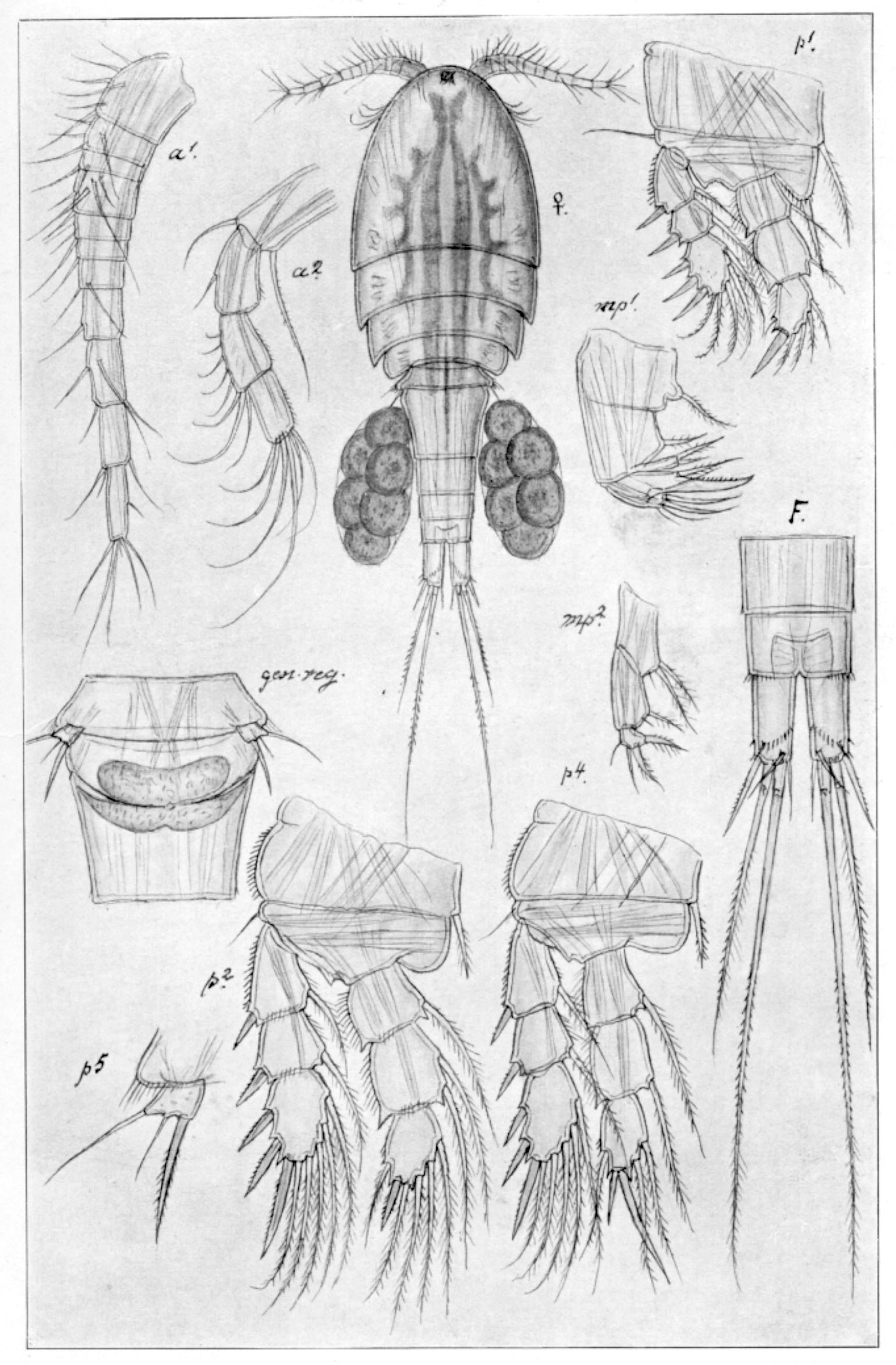Paracyclops poppei
The first records of Paracyclops poppei from Norway are from the 1990's. All records so far are from southeastern Norway and mainly from ponds and slow moving rivers situated in marine sediments.
Key characteristics
The first records of Paracyclops poppei from Norway are from the 1990's. P. poppei is therefore one of the few copepod species from Norway which has not been found/described by G.O. Sars. It resembles P. affinis, but in contrast to this species the antennae in P. poppei have only 8 segments and its furca is longer, about three times as long as wide. Unlike the two other species in this genus, the upper face of the furca branches is not crossed by a row of small spikes. Instead P. poppei has a longitudinal row of fine spikes starting from the lateral seta of the furca and ending close to the base of the last abdominal segment.
Female: Length 0.8–0.9 mm
Male: Length 0.7 mm
Ecology and distribution
About ten years after the first specimen was found in Norway, it has been recorded from nearly 1 % of the localities mainly from the surroundings of Oslo. Except for one, all records are from ponds and slow moving rivers situated below 150 m a.s.l. The species is associated with neutral, electrolyte rich water and occurs often together with P. affinis and P. fimbriatus. pH varies between 5,0 and 7.9 and conductivity between 1.5 and 45 mS/m.
| Vitenskapelig navn | < 4,5 | 4,5 - 4,9 | 5,0 - 5,4 | 5,5 - 5,9 | 6,0 - 6,4 | 6,5 - 7,0 | 7,0 - 7,4 | > 7,5 |
|---|---|---|---|---|---|---|---|---|
| 0 | 0,9 | 1,1 | 0,6 | 1,2 | 0,2 | 1,8 | 0,8 |
| Vitenskapelig navn | < 1,0 | 1,0 - 1,4 | 1,5 - 1,9 | 2,0 - 2,9 | 3,0 - 3,9 | 4,0 - 4,9 | 5,0 - 6,9 | 7,0 - 9,9 | > 10,0 |
|---|---|---|---|---|---|---|---|---|---|
| 0 | 0 | 1,6 | 0,3 | 0,4 | 0 | 0 | 1,9 | 3,1 |
| Vitenskapelig navn | < 0,01 | 0,01 - 0,09 | 0,1 - 0,9 | 1,0 - 9,9 | 10,0 - 99 | 100 - 999 | > 1000 |
|---|---|---|---|---|---|---|---|
| 0 | 2 | 0,3 | 0,5 | 0,3 | 0,5 | 2,2 |
| Vitenskapelig navn | < 100 | 100-299 | 300-499 | 500-699 | 700-999 | >1000 |
|---|---|---|---|---|---|---|
| 1,8 | 1,4 | 0 | 0 | 0 | 0 |
Look alikes
Paracyclops affinis
